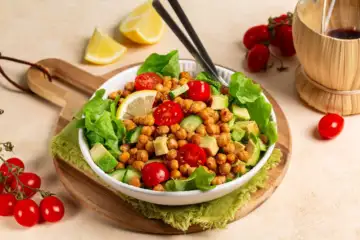Protein is one of the most recommended nutrients to stay fit, and it is generally advised to maintain a steady protein intake according to body weight.
But with so much focus on the amount of protein, let’s, for once, backtrack a bit and look at the sources. The sources are primarily two: plant-based and animal-based proteins. Each set of protein sources has its own pros and cons.
To help understand more about the nutritional profiles and resultant benefits or demerits of protein sources, Dr Medha Kapoor (PhD), nutrition and lifestyle consultant and co-founder at Varsity Skin & Wellness Clinic in New Delhi, shared with HT Lifestyle a clear picture of the protein sources, demystifying confusion surrounding them.
First up, beginning from the basics, she revealed the importance of protein, highlighting its ‘critical role in ensuring human survival.’ Medha added, “Protein is one of the three macronutrients that are vital for survival, along with carbohydrates and fats. However, it’s different from fats and carbs in terms of the fact that the body does not store protein in large amounts, so it becomes essential to consume protein regularly in the right quantity to ensure optimal health.”
She clarified another prominent misconception that many may have regarding protein- that it is only for fitness enthusiasts to build muscles. While yes, strengthening and building muscle mass is one of the effects of healthy protein intake, in reality, protein supports major biological functions, including hormone regulation. Medha said, “The benefits go far beyond building muscle as it also supports immune function, synthesises hormones and enzymes, and helps maintain muscle mass and strength.”
Now that protein’s importance is well established, again (just in case you are lenient with your intake), let’s revisit the sources. There is a lot of chatter regarding the sources, with debates about which is superior. But in practice, it is much more nuanced than a competition people make it out to be.
Medha clarified, “Indian diet allows for ample scope for both vegetarian and non-vegetarian sources of protein, but the effectiveness depends on many factors- such as method of preparation, food combinations as well as portions.”
There are several considerations, and depending on those factors, plant-based and animal-based proteins hold relevance.
The nutritionist listed out the advantages of vegetarian and non-vegetarian protein sources, along with the Indian protein variants for each source:
Advantages of vegetarian protein sources
 Common vegetarian protein sources in the Indian diet include lentils, chickpeas, kidney beans, black-eyed peas (lobia), paneer, milk and curd curd (dahi), along with soy, quinoa, nuts and seeds.
Common vegetarian protein sources in the Indian diet include lentils, chickpeas, kidney beans, black-eyed peas (lobia), paneer, milk and curd curd (dahi), along with soy, quinoa, nuts and seeds.
1. Lower in saturated fat: Compared to red meats etc, vegetarian food sources are lower in saturated fats, which helps in maintaining heart health.
2. Better fibre and micronutrient profile: Plant-based protein sources are high in dietary fibre, antioxidants, offering many health benefits
3. Lower risk of lifestyle diseases: Plant-based diets are associated with a lower risk of obesity, type 2 diabetes, altered lipid profile, hypertension, and even certain cancers.
4. More affordable: Legumes, pulses, and dairy products are more affordable as compared to non-vegetarian protein sources
Advantages of non-vegetarian protein sources
 Common non-vegetarian protein sources in the Indian diet include eggs, chicken, fish, mutton and seafood.
Common non-vegetarian protein sources in the Indian diet include eggs, chicken, fish, mutton and seafood.
1. Complete proteins: Have all nine essential amino acids required by the body.
2. Higher biological value: These are absorbed and utilised better compared to most plant proteins.
3. Rich in key nutrients: Rich in essential nutrients like Zinc, iron and B12
4. No need for combining with other foods: Provides a complete amino acid profile in a single food.
In other words, whichever quality you prioritise, whether it is heart-healthy or nutrient density, will help you identify which source suits you the best. The way forward is to look within and introspect, based on your health parameters, which protein source will best support your health.
